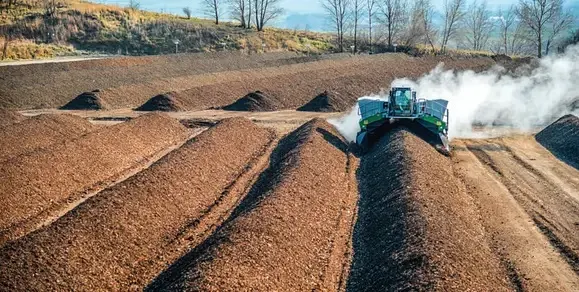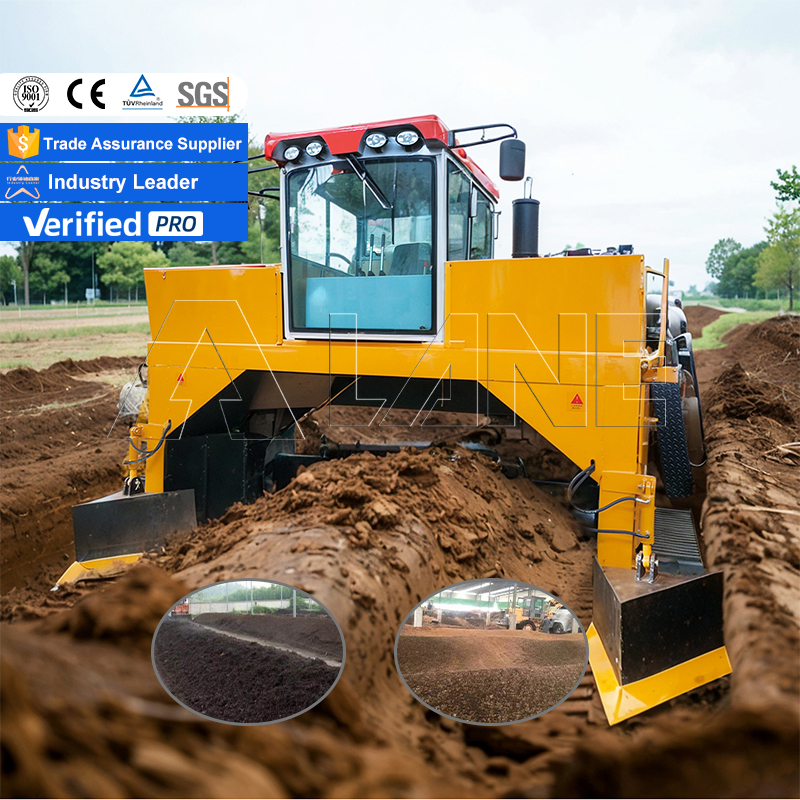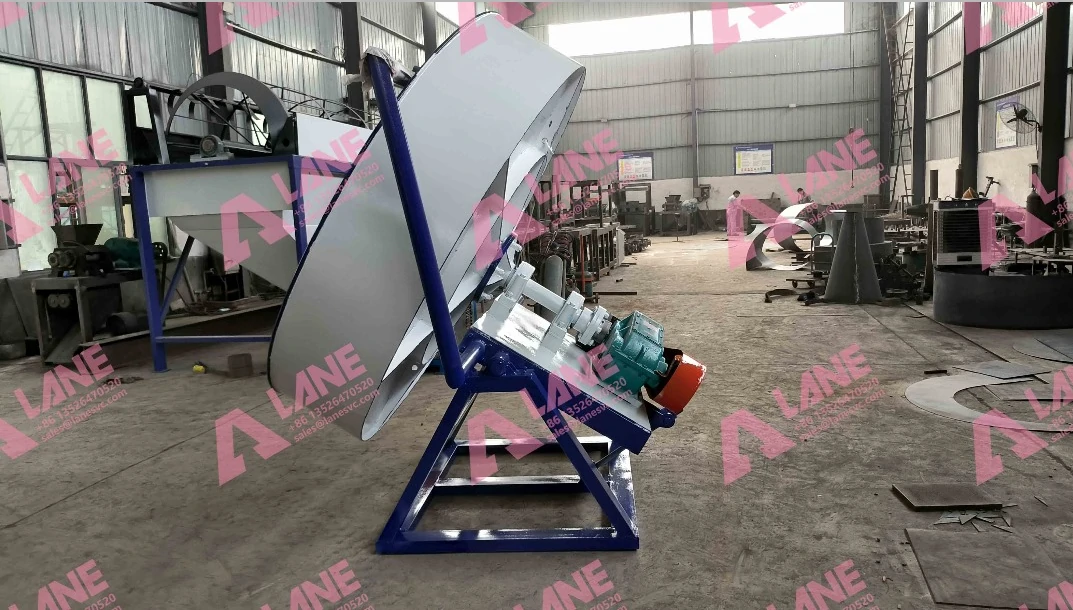Commercial organic fertilizers can generally be divided into three forms: powder, granules and liquid. Granular organic fertilizer contains nutrients in solid form and needs to be dissolved or decomposed into the soil to see the nutritional effect. It is very suitable for special crops such as herbs, spices, fruits and vegetables, and can be used for annual crops such as wheat, barley, oats, flax, lentils, peas, corn, hemp, tobacco, potatoes, mustard, fruits and vegetables, Saskatoons, winter wheat and rye. Organic fertilizer granules are the most widely used type of fertilizer in the world, so today, we mainly discuss the production methods and related equipment of granular organic fertilizers.

Selection and storage of organic raw materials: Almost all organic waste (except highly toxic waste) can be used as composting materials, but in order to increase soil organic matter or make growing media, materials with a high carbon-ammonia ratio should be used as the main ingredients, such as straw and husks of cereals (such as rice and wheat), corn stalks, bagasse, sawdust and other materials (such as tree trunks and branches). They should be dried and stored in a nearby place.
Reduce particle size: To shorten the preparation time, the waste is chopped into uniform sizes and then mixed in a controlled manner to ensure that the compost mixture has the desired characteristics (carbon-ammonia ratio, moisture content, etc.). Straw and green manure should be cut into 5-10 cm lengths. Wood and young branches of fruit trees and vine tombs should be cut using a crusher, grinder or chipper.
Strip composting: Strip composting is the most commonly used composting method in North America because it is suitable for a variety of raw materials and facility capacity, and composting can be carried out more simply in the form of strips. In this method, the waste is dumped on the ground in the form of a pile 1.5 meters to 2.5 meters high. (The spacing between the strips needs to take into account the size and type of the compost turner) Due to biological activity, the temperature can reach 55°C.
Regular turning of the windrows helps mix the material and, more importantly, provides oxygen to bacteria and ensures that all parts of the windrows reach the 55°C necessary to kill pathogens. When the temperature reaches or exceeds 55°C, turning is required every two to three days during the first two weeks. After this stage, the compost windrows do not need to be turned frequently because less heat is generated and less oxygen is required during the compost maturation process. The entire process takes 4 to 6 weeks.
Compost turners: Compost turners are commonly used to turn compost in large facilities. They mix, reduce particle size, and homogenize organic materials. They are larger in size and have more horsepower, can turn compost faster, and produce more uniform compost. Fully hydraulic compost turners are ideal for farm, municipal and industrial composting.

The finished compost is too wet and coarse to be directly made into pellets without further conditioning. Therefore, when preparing compost for granulation, 3 steps need to be performed first:
Grinding to produce finer material (finely ground compost will make almost all of the compost go through the granulation process);Using a chain crusher;
Screening to remove larger particles (for example, the part >10mm will be screened out and discarded. There is no fixed rule), rocks and unwanted debris;
Remove moisture by artificially drying the compost.
When targeting the granular fertilizer market, the nutrient content of the compost needs to be improved by adding other organic nutrients (such as humic acid) and mineral fertilizers. Humic acid helps to improve soil fertility. It is an ideal additive to enhance biological activity and improve the performance of compost or composted fertilizer, and is an effective supplement for use as a synthetic fertilizer or organic fertilizer. The addition of these organic ammonia sources and mineral fertilizers (such as phosphate rock and potassium sulfate) has a significant impact on improving the particle size distribution of the mixture and making the mixture easier to granulate. Use a horizontal mixer.
Why granulation: Granulation can greatly simplify storage, transportation and batching, improve usability and storability; compost granulation can improve its slow release and avoid ammonia deficiency.
Granulator: Organic fertilizer granulators include new organic fertilizer special granulators, flat die extrusion granulators, disc granulators, and roller extrusion granulators. From the perspective of global popularity, new granulators are the winners. Due to their large production capacity and “talent adaptability”, they have been sold to the United States, Australia, Malaysia, Thailand, South Africa, Philippines, South Africa, Kenya, Tanzania, the Netherlands and other countries. Click to learn: Working principle and granulation method of new organic fertilizer granulator.

Why dry: Granular organic fertilizer must contain a certain proportion of water, and the water retention in the fertilizer has a significant impact not only on the quality of the final product, but also on its effective parts, so the drying process is an important step in organic processing.
Rotary dryers: Rotary dryers are used to reduce or minimize the liquid moisture content of fertilizer granules, which are treated by direct contact with heated gases. Organic fertilizer granules are sprayed with hot gas, ambient or conditioned air streams flowing in co-current or counter-current directions to remove moisture. Rotary dryers are widely used in the fertilizer industry.
After the drying process, organic fertilizer is also cooled by a rotary cooler to remove heat. The cooler is slightly tilted so that the discharge end is lower than the feed end to convey the fertilizer through the cooler under gravity. The organic fertilizer to be dried enters the cooler and is lifted by a series of internal fins on the inner wall of the cooler as the rotary cooler rotates. When the fertilizer rises high enough to roll off the fins, it falls back to the bottom of the cooler and passes through the cold air flow as it falls.
Before bagging or bulking, organic fertilizer granules should be screened to obtain the desired particle size and remove product size fractions. During this process, the fertilizer is separated into a product size range that can be used as fertilizer by screening, and particles larger and smaller than the useful range are reprocessed. Fine powder is returned to the granulation stage; oversized particles are re-crushed and returned to the granulator together with undersized particles: the particle size is uniform, which is conducive to bulk packaging and sales.
Organic fertilizers of uniform size are sent to the automatic packaging machine via a belt conveyor and bagged!
For more details, please feel free to contact us.
Henan Lane Heavy Industry Machinery Technology Co., Ltd.
Email: sales2@lanesvc.com
Contact number: +86 15515885328
Whatsapp: +86 15515885328